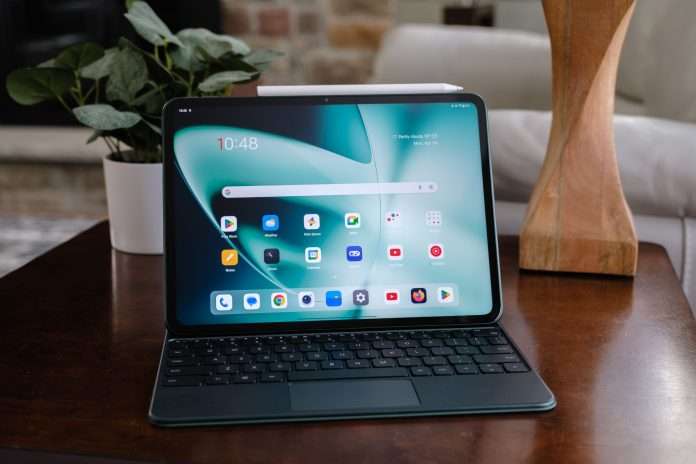The Android tablet revolution shows no signs of abating. This was nearly entirely Samsung’s domain not long ago, but we now have good slates from Xiaomi, Oppo, Nokia, and Lenovo to select from. With the fittingly called OnePlus Pad, OnePlus is the latest manufacturer to join the party. This $479/£439 tablet doesn’t reinvent the wheel, but it does offer a compelling value for money.
But does that imply you should buy one? Yes, I believe so, but only if you use your tablet in a specific way.
Design & build
- Premium glass and aluminium design
- Only available in dark green
- Face unlock, but no fingerprint sensor
The OnePlus Pad is made of the same glass and aluminum that we’ve come to expect from contemporary tablets, yet still manages to stand apart.
This is mostly owing to the striking Halo Green finish on the back. It shimmers pleasantly in the light while resisting fingerprint smudges and other debris.
However, in a world where so many tablets are black or grey, OnePlus is taking a risk by not offering an alternative color option. I personally prefer the dark green appearance, but you may not. Unlike smartphones, many users will use the OnePlus Pad without a case.
Despite its mid-range price, the OnePlus Pad looks and feels like a flagship tablet
It’s not very light for an 11.6in tablet at 552g. But I had no trouble holding it for extended periods of time, thanks to the aluminum back, which makes it more grippy than glass.
A round rear camera module is another distinguishing feature on the back. Even though there’s only one lens, it’s a reference to OnePlus’ devices. It protrudes very little from the rear of the tablet and has no effect on usage; the Pad remains reasonably pleasant to grip.
While it may not appeal to everyone, I have no complaints about the design. Despite its low price, the OnePlus Pad has the appearance and feel of a top tablet.
There is no SIM tray since it does not support mobile data or expandable storage. On the side, in addition to the standard power and volume buttons, there are four speakers and a pogo connection for docking into the optional keyboard.

Although there is no 3.5mm audio jack, charging and data transfer are done via USB-C. That’s hardly surprising given that practically all OnePlus phones have lost the connector, but lack of space isn’t an excuse.
OnePlus has also opted not to add a fingerprint sensor on the Pad, which is disappointing. Face unlock is less secure, but it is simple to set up, dependable, and fast. When used in landscape mode, the selfie camera is in a natural position – above the screen.
Screen & speakers
- 11.6in LCD display
- 144Hz refresh rate
- Excellent quad stereo speakers
The OnePlus Pad’s display is without a doubt its finest feature. It has an 11.6in, 28002000 LCD display, which gives it an uncommon 7:5 aspect ratio. According to OnePlus, it was inspired by actual books, and it definitely feels quite natural to hold and use.
The Pad’s excellent detail makes it a terrific choice for casual reading, but it is capable of so much more. Excellent, vibrant colors bring information to life, whether it’s a series of photographs on social media or a feature-length film. When it comes to content viewing, the OnePlus Pad is a real stunner – everything simply looks so fantastic.
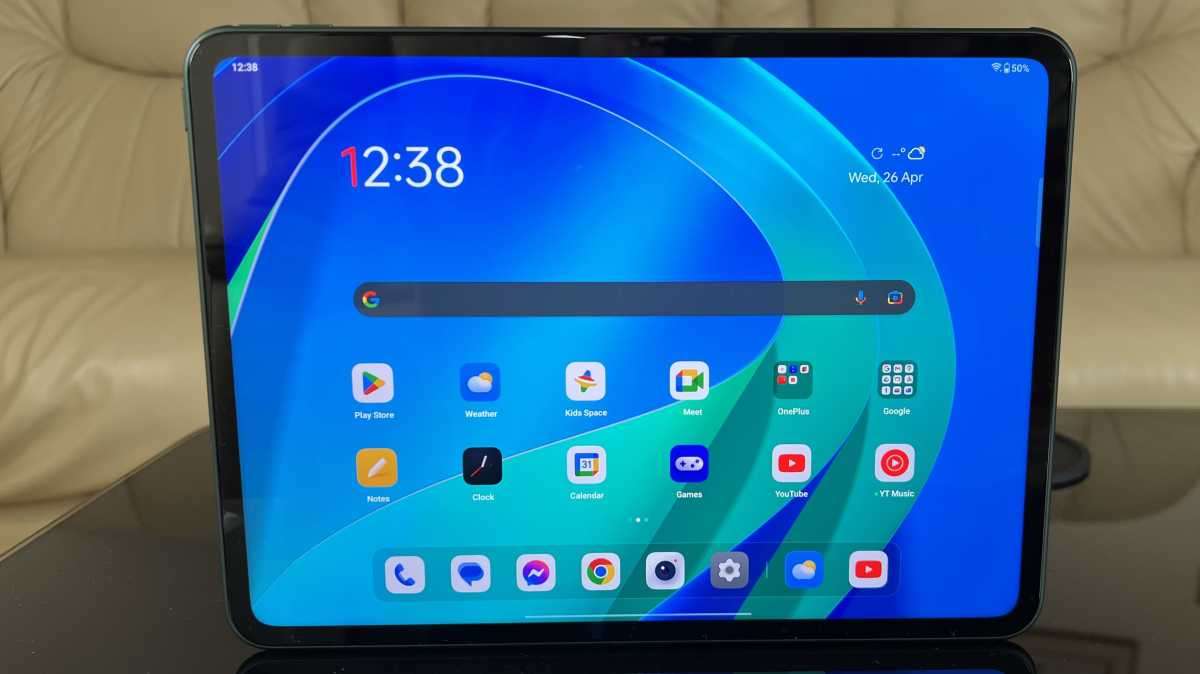
Before trying the OnePlus Pad, I was worried that the lack of an OLED display would ruin the viewing experience. But I didn’t have to worry because the LCD panel performs admirably in almost every situation. The only significant exception is in darker situations, where colors may seem grey rather than deep black.
However, at this price, most people will be willing to make that small sacrifice, especially since you get the highest refresh rate of any tablet. The Pad’s display can reach 144Hz, making things feel extraordinarily smooth and fluid. While the effect isn’t as impressive as it is on smartphones, it is noticeable when compared to 60Hz, which is what Apple’s $599/£669 iPad Air is stuck at.
Furthermore, LTPO technology allows the refresh rate to be dynamically reduced all the way down to 30Hz, which helps to conserve battery life. It seems like you’re getting the best of both worlds, but you may limit it to 60Hz if you wish.
The OnePlus Pad is one of the most responsive tablets available, with a touch sampling rate of 144Hz (how many times the display can record touch input per second).
The OnePlus Pad is a total knockout when it comes to content consumption – everything just looks so good
Because the screen is highly reflective, the 485 nits of brightness is insufficient for comfortable outdoor visibility. But if you’re driving or taking public transportation, you’ll be OK.
Sound is frequently used in tablet video viewing. The good news is that the OnePlus Pad comes equipped with some of the greatest speakers available. There are four in all, two on each side, and they offer some strong sounds.
It’s especially noticeable when playing music, as the Pad produces a rich, full-bodied sound with a good touch of bass. Podcasts sound just as nice with crystal-clear voices. While the volume never gets loud enough to fill a room, you do manage to keep the sound from becoming audibly distorted.
The speakers are even directionally sensitive, which means the tablet can modify which speakers produce which sound based on how you hold it. In portrait mode, for example, the two speakers on the right side will be different from those in landscape mode.
Accessories
- All accessories sold separately
- Unconvincing Magnetic Keyboard
- Impressive Stylo digital pen
The OnePlus Pad comes with merely the tablet itself, but there are lots of other extras to pick.
A standard $39/£59 Folio Case is one choice, but I tested the premium $149/£149 version with a built-in keyboard. When you connect the tablet, pairing is automatic; no Bluetooth is required.
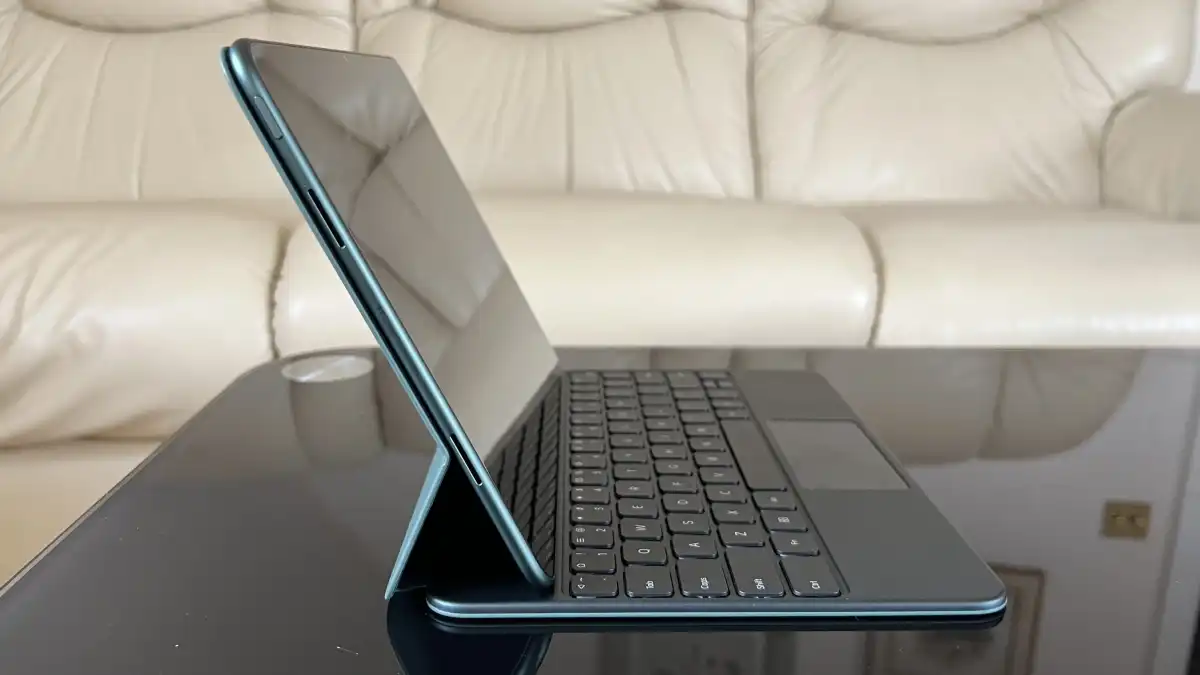
The typing experience is obviously reduced with a smaller display than virtually all laptops. All of the standard keys are still present, however the space is quite constrained. It took some getting used to, and my typing speed remained slower than usual throughout the testing.
The keyboard is unimpressive when combined with limited key travel and no backlighting. The little trackpad underneath it is similarly inconvenient; for serious surfing, you’ll almost probably need to attach a mouse.
Despite relying on Bluetooth, the OnePlus Stylo digital pen ($99/£99) is far more successful. It magnetically connects to the top of the tablet for pairing and charging, and the experience is very similar to writing with a pen on paper.
A reaction time of 2ms implies that there is no discernible wait before handwritten notes or sketches show on the screen. A good palm rejection technology prevents unintended markings, but it is not pressure sensitive – you must manually pick different colours to imitate it.
The entire setup, complete with keyboard and pen, is evocative of either the iPad Pro or Samsung’s Galaxy Tab S8 Ultra, although the OnePlus Pad is far less expensive.
Specs & performance
- MediaTek Dimensity 9000 chip
- Impressive performance, even while gaming
- 128GB of storage, no cellular option
The Dimensity 9000 chipset powers the OnePlus Pad. The Dimensity 9000 isn’t MediaTek’s freshest and greatest (that honor belongs to the Dimensity 9200), but it’s still one of the most competent chips on any mobile device at the time of writing. It’s remarkable to see it on a mid-range tablet, which means performance on the OnePlus Pad is excellent – I couldn’t ask for much more.
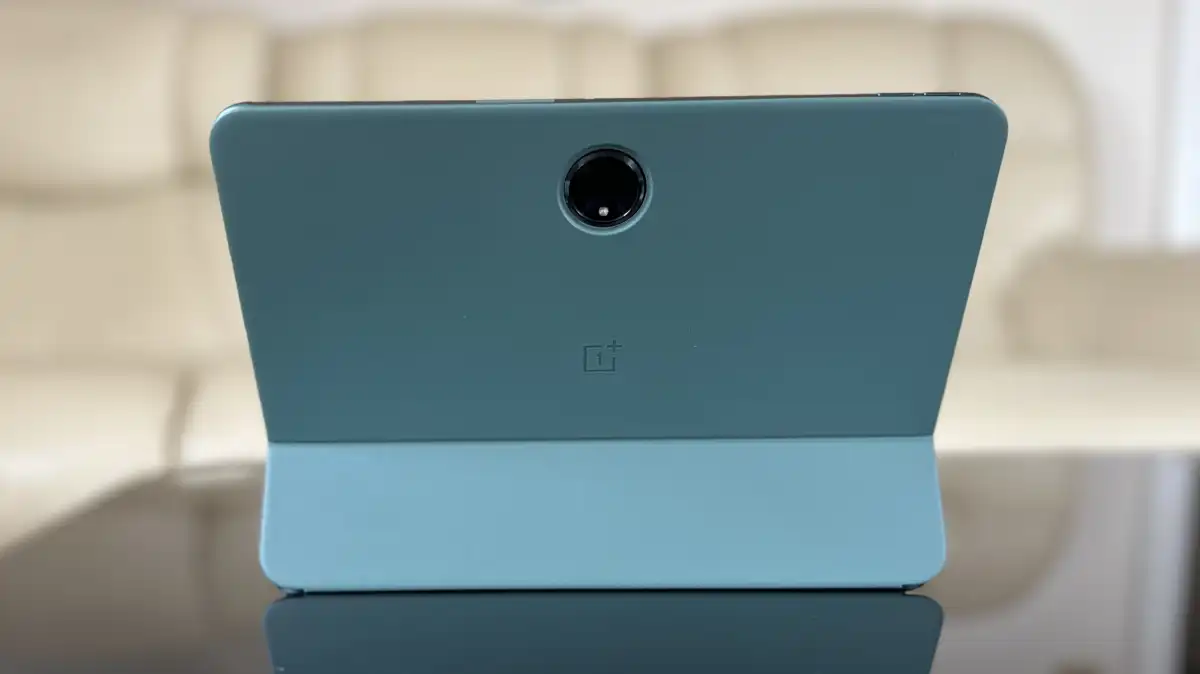
Despite the fact that 8GB of RAM is the sole choice, the tablet easily handles all of the most typical tasks. This involved a lot of web browsing, email, social networking, and video viewing, as well as some photography on the side.
Even when moving between them fast or utilizing them side by side, there was no obvious lag or delay. It’s not as fast as one of the newest iPads, but it’s not far off.
Performance on the OnePlus Pad is superb – I couldn’t ask for much better
This impressive performance extends to gaming, one of the OnePlus Pad’s most demanding use cases. The experience of playing games like Call of Duty: Mobile and PUBG Mobile was indistinguishable from those of the top tablets available – despite the fact that only few titles can output at the maximum 144Hz refresh rate.
While there were some noticeable frame drops in Asphalt 9: Legends, the game was still very playable. Even after about half an hour of gaming, the Pad remained only mildly warm to the touch. I have no issues about thermals even without a fan.
OnePlus Pad benchmarks
For some, internal storage may be a concern. The single model offered has 128GB of storage with no ability to expand via microSD. With about 15GB eaten up by system files that cannot be removed, that leaves just over 100GB, which is acceptable if you rely on cloud storage and only stream films, but if you wish to install several games and save music or video files, you may run out sooner.
The absence of cellphone service is particularly upsetting. Instead, you’ll have to make do with Wi-Fi 6 and Bluetooth 5.3 for connectivity.
Cameras
- Decent 8Mp selfie camera
- Supports 1080p video
- Underwhelming 13Mp rear camera
Cameras aren’t as important on tablets as they are on smartphones, but they’re still handy in a variety of circumstances.
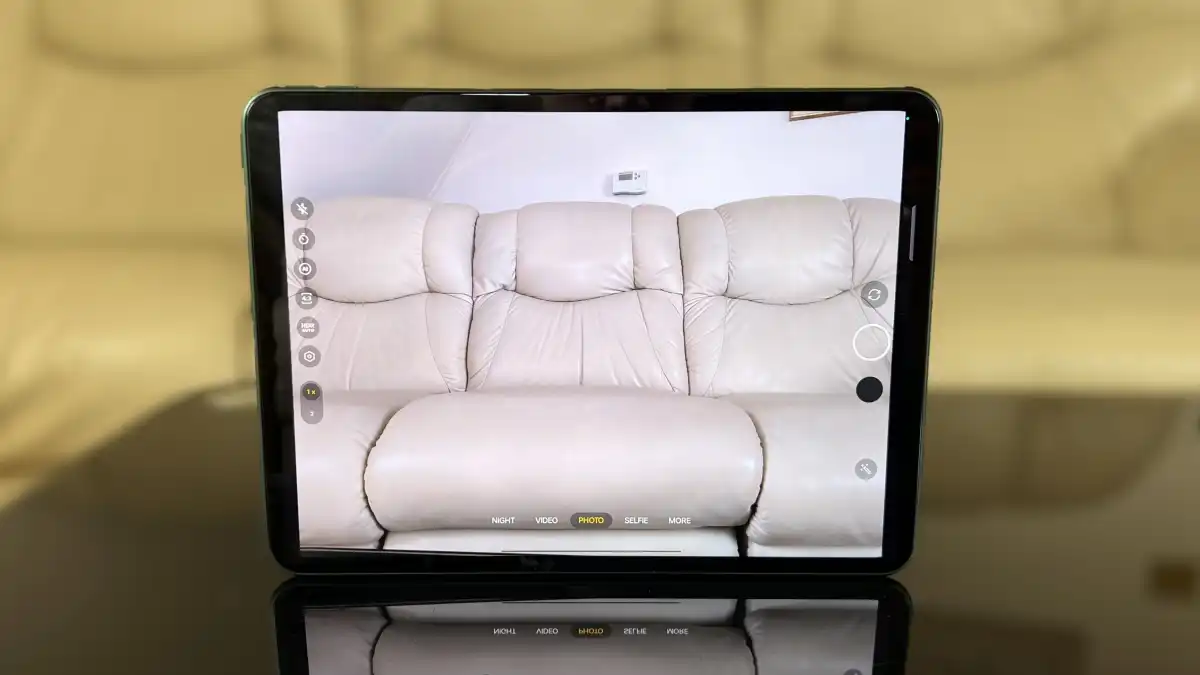
The most apparent is using the front-facing camera for video calling, which on the OnePlus Pad is an 8Mp sensor. It can capture in Full HD (1080p) at 30 frames per second, and I was pleasantly delighted by the quality.
In general, sharp, well-exposed film with plenty of detail may be expected. The selfie lens is nothing exceptional, yet it suffices for casual video chats or business meetings. Stills are of a similar quality, and in many cases are equivalent to inexpensive phones. There is a portrait mode available, but it isn’t the finest.
I don’t advocate using a tablet as your primary camera, but the 13MP rear sensor is still useful. Stills and movies (up to 4K at 30fps) seem little grainy and washed out, but they’re perfectly enough for reference photographs or the occasional home film.
If you need a back camera for anything other than the most basic purposes, acquire a nice smartphone instead. Everyone around you will be grateful.







Battery life & charging
- 9510mAh battery
- Comfortable all-day battery life
- 80W charger not included for UK.
The Pad is powered by a 9510mAh battery, which translates to roughly 37Wh if you’re more familiar with laptop batteries. That’s a respectable capacity for a tablet of this size, albeit the high quality 144Hz display puts it to the test.
Nonetheless, you won’t have to worry about battery life all that often. The OnePlus Pad can be used for an entire day, including a couple of hours of power-hungry gaming, and still have battery left over by evening. If you just use your tablet in the evening, you may last two or even three days on a single charge.
If you only use a tablet in the evening, two or even three days on a single charge is possible
This is mirrored in the battery test in the PCMark program, which seeks to emulate real-world usage at 200 nits of brightness. A time of 10 hours and 43 minutes is above average, even though actual screen time is just approximately half of that.
While I was unable to test it due to my limited review time, OnePlus claims a full month of standby time. It’s good to have this piece of mind even if you just use your tablet periodically.
However, when you run out of juice, the charging situation varies depending on where you live. While US customers receive the 80W charger (which charges at 67W due to US mains power restrictions), it costs £39 extra in the UK, where customers only receive a USB-C to USB-A cable.

If you have a quick charger at home, that’s fantastic. However, I only had a 33W version, which charged the OnePlus Pad slowly. It only hit 18% in 30 minutes, which was disappointing.
With no wireless charging, I was hoping for more from OnePlus.
Software
- OxygenOS, Android 13
- Tablet-specific features work well
- Lack of capable, optimised apps
The OnePlus Pad runs OxygenOS 13.1 on top of Android 13. The software experience will be familiar if you’ve used a OnePlus (or Oppo) phone, but there are some useful extra features here.
They include a two-finger swipe down from the center of the screen (in landscape mode) to access split-screen multitasking, which is surprisingly easy to figure out once you figure it out. The OnePlus Pad can run up to three apps on the screen at once, plus another in a floating window.
OnePlus also features a ‘Smart Sidebar’ that allows easy access to these and other frequently used apps. However, I found it to be more annoying than useful, as a swipe from the right side can easily activate it by accident.
Other than that, the OxygenOS experience is similar to what we’ve seen before. Apart from a redesigned quick settings menu and new stock apps, it’s very similar to’stock’ Android. There are a number of programs which may be labeled bloatware, however most of these can be deleted.

The OnePlus software experience makes it simple to open a game or begin watching a video, but it has issues when it comes to getting work done. Most desktop productivity tools are just unavailable, and those that are, such as Microsoft Word and Adobe Lightroom, lack crucial functionalities.
Then there’s the reality that most third-party tablet apps are basically bigger copies of phone apps that haven’t been optimized for the larger screen. The absence of strong, optimized apps impacts all Android tablets, but it remains the primary reason to avoid purchasing the OnePlus Pad.
The lack of powerful, optimised apps affects all Android tablets, but it’s still the main reason not to buy the OnePlus Pad
For its flagship phones, OnePlus has committed to four major Android version updates and five years of security updates, but there is no specific commitment for the OnePlus Pad.
Price & availability
Given the specifications on offer, the OnePlus Pad is reasonably priced. The sole available option is 8GB of RAM and 128GB of storage for $499/£449. It is now available for pre-order.
The Folio Case ($39/£59), Magnetic Keyboard ($149/£149), and Stylo pen ($99/£99) are all worth considering as optional additions.
At this pricing point, decent Android tablets are few and far between, with the Xiaomi Pad 5 being the only plausible option. If you’re not determined on Android, other tablets worth considering are the 2022 iPad (from $449/£499) and the Surface Go 3 (from $399/£369).
However, for everything you get here, the OnePlus Pad represents excellent value.
Specs
- MediaTek Dimensity 9000
- 8GB RAM
- 128GB non-expandable storage
- 11.6in 2800×2000 LCD display
- 144Hz dynamic refresh rate
- 9510mAh battery
- 67W fast charging (charger not included in UK)
- Front-facing 8Mp camera
- Rear 13Mp camera
- Quad stereo speakers
- 258 x 189.4 x 6.5mm
- 552g (tablet only)


